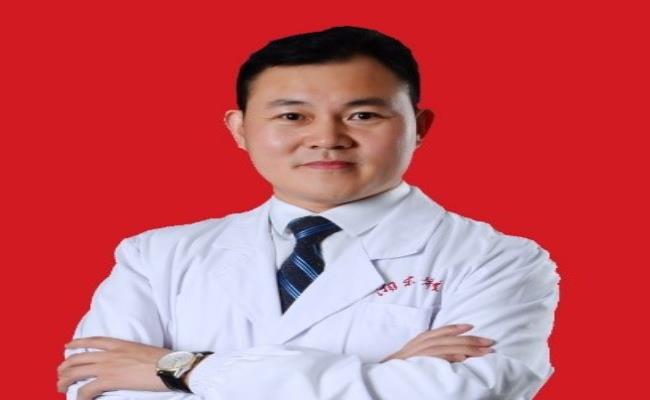-
刘庆
收藏 -
中南大学湘雅医院(三级甲等)
教授 | 神经外科

-
 医生简介
医生简介刘庆,男,医学博士,留美博士后,主任医师,博士研究生导师。担任中南大学湘雅医院神经外科副主任兼颅底神经外科主任、湖南省颅底外科与神经肿瘤研究中心副主任、中南大学神经外科研究所副所长,兼任中华中青年神经外科交流协会常委、中华医学会神经外科分会青年委员会秘书长、湖南省神经外科专业委员会委员、Oncotarget、Chinese neurosurgical journal、中华外科杂志等审稿专家、国家自然科学基金项目评审专家。湖南省高层次卫生人才工程学科骨干人才,入选中国名医百强榜专科Top 10医师。2015年接受美国University of California Davis Health System高级医院领袖培训项目培训。
研究方向为颅底脑干肿瘤显微手术和神经肿瘤发病机制与靶向治疗研究。
1999年师从袁贤瑞教授于中南大学湘雅医院攻读神经外科硕、博士学位,从事神经外科临床和科研工作。2004年获博士学位后,继师从著名神经外科专家于春江、石祥恩教授,主要致力于颅底、脑干肿瘤和脑血管病的临床治疗和基础研究。2006-2007年赴美从事博士后研究,研究方向为脑胶质瘤的分子免疫治疗和缺血脑保护的机制,期间在美国阿肯萨斯大学神经外科访问学习,师从世界著名的神经外科大师Ossama Al-Mefty,Ali Krisht教授,对颅底肿瘤、复杂动脉瘤手术,尤其是岩斜坡区肿瘤和海绵窦肿瘤手术方式和理念有了更深刻的理解。 2008年以来,每年完成各类复杂颅内肿瘤手术300-500例,手术并发症少,死亡率低于0.5%,在最复杂、最有挑战性的颅底脑干肿瘤手术方面,形成了一定的专业优势。主要特色技术有:1.颅底中央区脑膜瘤显微手术;2.垂体腺瘤微创手术;3.颈静脉孔区肿瘤显微手术;4.丘脑、脑干肿瘤显微手术;5.复杂脑胶质瘤显微手术。
主要学术努力:
1.开展了湖南省首例唤醒麻醉和导航下功能区脑胶质瘤切除术,推动了本省神经外科精准手术的发展;
2.提倡并实现了保留垂体功能的垂体腺瘤真正微创手术;
3.开展颞前硬膜外经海绵窦入路切除海绵窦肿瘤、枕下乙状窦后经天幕入路切除岩斜坡区脑膜瘤、远外侧髁旁-迷路下入路切除颈静脉孔区肿瘤等,实现了复杂颅底肿瘤的微创化手术治疗;
4. 突破手术禁区,积极实施丘脑、脑干肿瘤手术,取得了良好临床疗效。
主持或主要参与国家十二五科技支撑计划项目、国家自然科学基金项目、北京市自然科学基金、湖南省科技计划重点项目、中南大学创新驱动项目等10项。近年来在Neuro-oncology、Journal of Neurosurgery、Neurosurgery、《中华外科杂志》、《中华神经外科杂志》等国内外核心期刊发表学术论著30余篇,主译《神经外科医师手册》1部,参编 参译神经外科专著5部。2009年获得湖南省医学科技一等奖、湖南省科技进步二等奖、全国医药行业科技进步一等奖。
Personal information
Name (in pinyin and Chinese): Qing Liu 刘庆
Business Address: Department of neurosurgery, Xiangya Hospital, Central South University,No.87 Xiangya Road, Kaifu District, Changsha City, Hunan Province, P.R.C.
Work Phone: 073189753735
Education
Month, Year – Month, Year University Name: 09/1999-06/2004 Xiangya School of
Medicine, Central South University
Degree and Major: PhD、Neurosurgery
Thesis Topic/Research Focus (for masters and PhD degrees): Neurosurgery
Work Experience
Month, Year–Month, Year Employer: 10/2014-so far Xiangya Hospital Central South University.
Position or Title: Chief Physician in Neurosurgery/Professor/ Director of skull base neurosurgery
Focus on skull base tumors, including pituitary adenoma/acoustic neuroma/chordoma/Central Skull Base meningioma
Month, Year–Month, Year Employer: 10/2008—09/2014 Xiangya Hospital Central South University
Position or Title: Associate Chief Physician in Neurosurgery
Month, Year–Month, Year Employer: 01/2008—09/2008 Sanbo Brain and spine hospital, Capital Medical University
Position or Title: Associate Chief Physician in Neurosurgery
Month, Year–Month, Year Employer: 10/2007—12/2007 University of Arkansas for Medical Science, UAMS
Position or Title: Visiting Scholar
Month, Year–Month, Year Employer: 12/2005—10/2007 University of Texas Southwestern Medical Center at Dallas
Position or Title: Postdoctoral
Awards and Group Memberships
US Dr. Liu completes as much as 500 sophisticated intracranial tumor surgeries per year, while no or seldom surgical complications happened, the death rate even lower than 0.5%.Therefore,so far Dr. Liu is the deputy director of neurosurgery in Xiangya Hospital and the Institute for Neurooncology and Skull Base Surgery in Hunan province. What’s more, Dr. Liu is the member of standing committee for neurosurgery in Chinese Medical Association and Hunan province. Besides, Dr. Liu is the corresponding editor in varied top journals in China, like Chinese Journal of Surgery, Chinese Journal of Neurosurgery etc. In addition, Dr. Liu was invited to be the assessment experts by National Natural Science Foundation of China. Because of such outstanding contributions for the clinical and science research, Dr. Liu was named as “TOP 10 Neurosurgeon” of China in two consecutive years (2013 and 2014) and attended distinguished hospital leader training program at University of California Davis Health System in 2015.
Research interest
Dr. Liu keep Sparing no effort to optimize the best conditions for the surgery to brain tumors, especially for the tumors in brainstem and skull base. On the other hand, Dr. Liu also focuses on exploring the molecular mechanisms and searching immunotherapy targets of glioma so that bring therapeutic benefits to the patients without the operation indication.
Publications
1、Chief translator of The Neurosurgeon’s Handbook (written by Samandouras George)
2、PTK7 regulates Id1 expression in CD44-high glioma cells.PTK7 regulates Id1 expression in CD44-high glioma cells(NEURO-ONCOLOGY)(1522-8517)(2014.09)
3、Brainstem glioma progression in juvenile and adult rats(JOURNAL OF NEUROSURGERY)(0022-3085) (2008.11)
4、miR-200b as a prognostic factor targets multiple members of RAB family in glioma(MEDICAL ONCOLOGY)(1357-0560)(2014.03)
5、Neuroprotective and anti-apoptotic effects of valproic acid on adult rat cerebral cortex through ERK and Akt signaling pathway at acute phase of traumatic brain injury(BRAIN RESEARCH)(0006-8993) (2014.03)
6、Downregualtion of dynamin-related protein 1 attenuates glutamate-induced excitotoxicity via regulating mitochondrial function in a calcium dependent manner in HT22 cells(BIOCHEMICAL AND BIOPHYSICAL RESEACH)(0006-291X)(2014.01)
7、miR-135b Contributes to the Radioresistance by Targeting GSK3β in Human Glioblastoma Multiforme Cells(PLOS ONE)(1932-6203) (2014.09)
8、miR-200b as a prognostic factor in breast cancer targets multiple members of RAB family(JOURNAL OF TRANSLATION MEDICINE) (1479-5876) (2014.01)
9、Disturbing miR-182 and -381 inhibits BRD7 transcription and glioma growth by directly targeting LRRC4(PLOS ONE) (1932-6203) (2014.01)
-
 执业点
执业点中南大学湘雅医院(三级甲等)神经外科